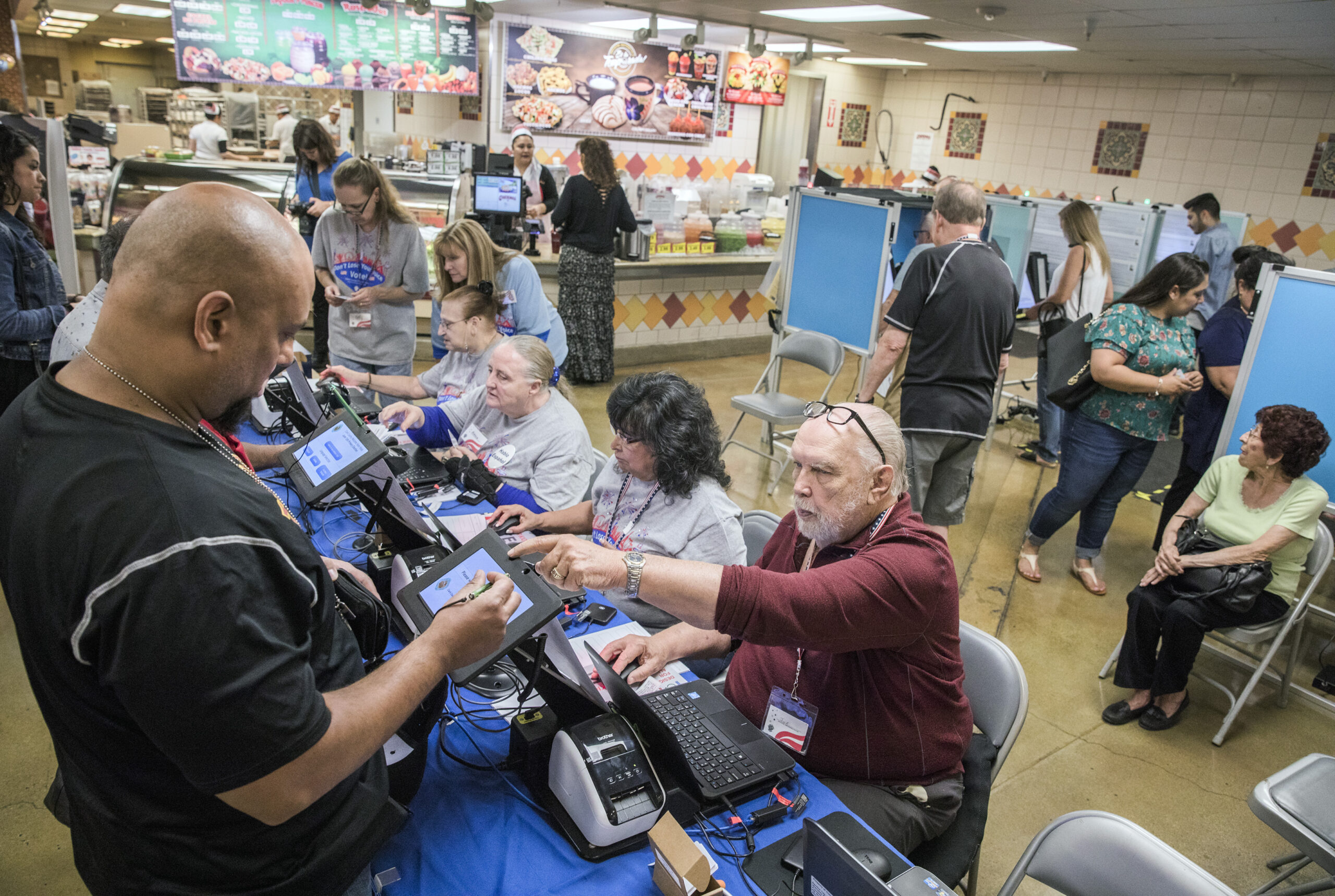Despite growing numbers, Latino turnout in midterm election uncertain

With two weeks left before the midterm elections, more Latinos in Nevada and around the nation are eligible to vote than ever before, but speculation varies as to whether they will actually show up at the polls — a scenario that has also kept the political parties guessing in past midterms.
According to a report from the Pew Research Center, 29 million Latinos will be able to participate in the 2018 election, including 387,000 in Nevada, which is 19 percent of all eligible state voters and nearly 45 percent of Nevada’s Latino population.
Those numbers are expected to rise in coming years as Latinos, who in general are a young population, turn 18 and also as others become naturalized citizens, said Eric Herzik, chairman of the political science department at the University of Nevada, Reno.
But “Latino vote turnout...constantly lags other groups,” he added.
Latino voter participation in Nevada shrunk in 2014, the last midterm election, to just 10.4 percent of votes cast after hitting 19 percent of the vote in 2012. The state’s Latino vote jumped back up to 18 percent of the votes cast in 2016, which, like 2012, was a presidential year.
Herzik said that while the youth of the Latino community means a potential increase in their voting numbers and political strength, youths are known for not consistently voting.
“From the Latino political power perspective, Latinos have this potential vote, but your pool is weighted to younger voters — and younger voters generally turn out at lower levels than older voters,” he said.
Herzik also said he expects a Latino candidate to eventually represent the state’s 1st Congressional District, which covers most of Las Vegas. The Pew report showed that Latinos are closing in on becoming the majority of the population in the district. There are 132,000 eligible Latino voters in the district, which is about 30 percent of the voting population. Democratic Rep. Dina Titus currently holds the seat.
The tendency for Latinos, and other Democratic voters who live mostly in Clark County, to stay home in off-year elections has given an advantage to Republican candidates, who typically rely on turnout from northern, rural voters who are older and whiter and regularly vote, mostly for GOP candidates.
“For the past, easy, decade, Democrats have had these large leads in the number of registered voters,” Herzik said. “But Republicans remain competitive in large part because the turnout in Clark County is so low, and then you can make up at least part of your gap with this very high turnout in the rural counties. It’s a very high turnout, and it’s overwhelmingly Republican.”
In 2012, Heller used the strategy by staying within striking distance in Clark County and winning the rural votes. He sealed the deal by winning Washoe County, which has become increasingly mixed politically as its economy has diversified. Heller’s margin of victory over Democrat Shelley Berkley was just over one percentage point.
He hopes to repeat the feat against Democratic Rep. Jacky Rosen, who is challenging him in a brutal campaign that has drawn national attention.
But Democrats hope to overcome history this year. David Damore, chair of the political science department at UNLV, pointed to a last week’s national tracking poll from Latino Decisions, which showed that Democrats are reaching out to the Latino community.
The weekly poll, conducted on behalf of the National Association of Latino Elected and Appointed Officials (NALEO), showed that nationally, 55 percent of Latino voters had been contacted by a political party, campaign or political organization. The latest poll was conducted during the week of Oct. 3 through 15.
However, the kind of engagement matters, too, he says.
“Among marginal Latino voters, direct contact, preferably repeated direct contacts, is the most effective tool for mobilization,” Damore, who is also an analyst with Latino Decisions, said in an email. “Absent this type of outreach, Latino midterm drop off can be significant — and the most reliable Latino voters (older, wealthier, English speaking etc.) tend to lean Republican. Or put differently, the larger the Latino turnout, the greater the support for Democrats.”
This year in Nevada there has been a concerted effort by progressive groups to engage Latino voters.
Planned Parenthood has begun spending $3 million in Nevada to mobilize 300,000 voters in the state using peer-to-peer texting, digital organizing, as well as providing resources and training community leaders to knock on doors. The Culinary Union also has a formidable political operation and consistently plays a role in helping get out the vote in Southern Nevada.
Those progressive groups “not only show up a few weeks before election time, but work year round in cultivating relationships, listening to people’s priorities and helping people use their voice to advocate for improvements that affect their families,” said Frank Sharry, the executive director of immigration advocacy group America’s Voice. “That’s the model that should be in every major area where Latino voters reside.”
Early voting started on Oct. 20. The election is Nov. 6.
Disclosure: The Culinary Union and Shelley Berkley have donated to The Indy. You can view a full list of our donors here.
